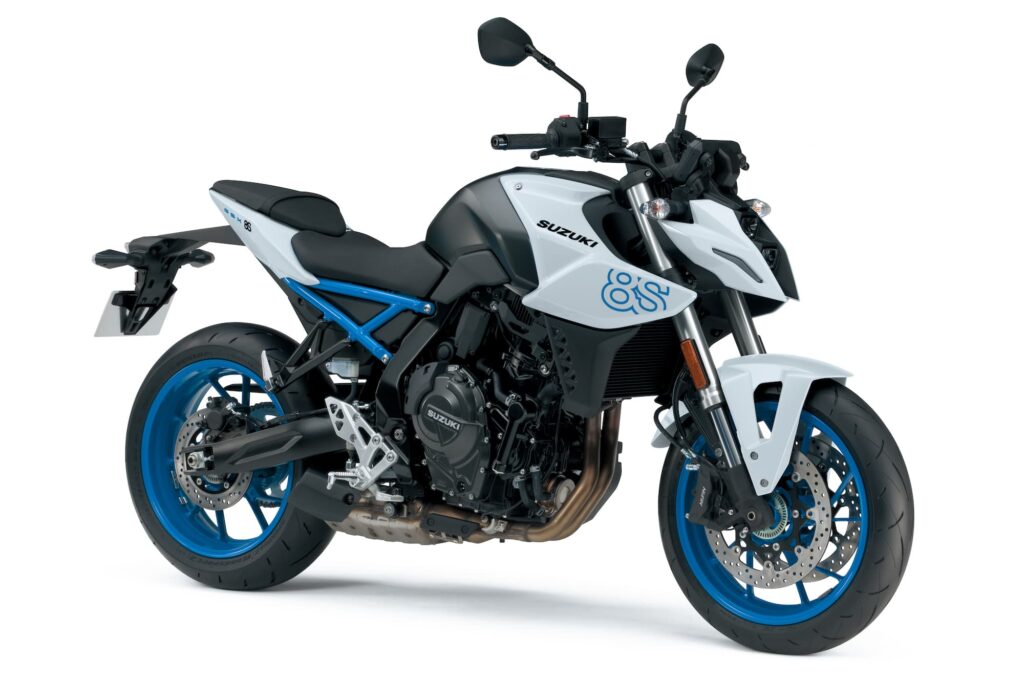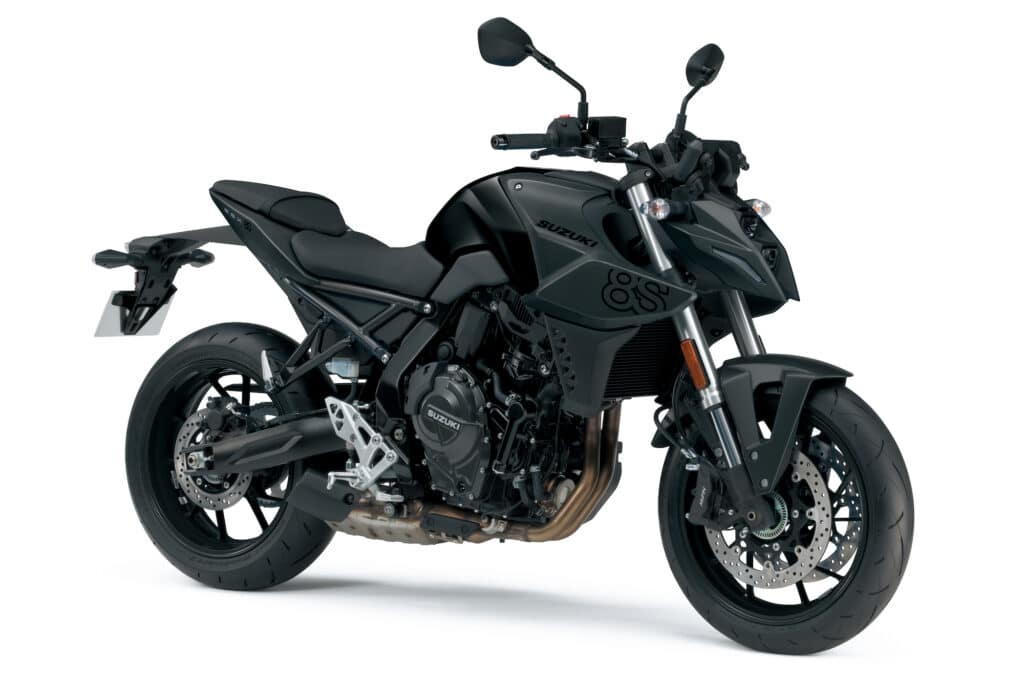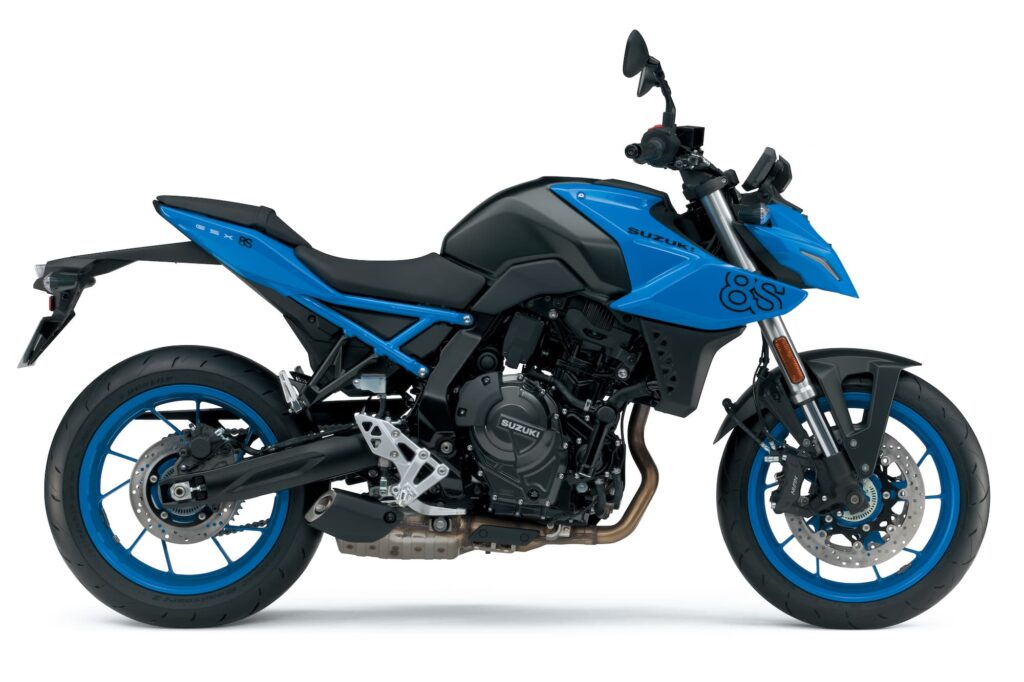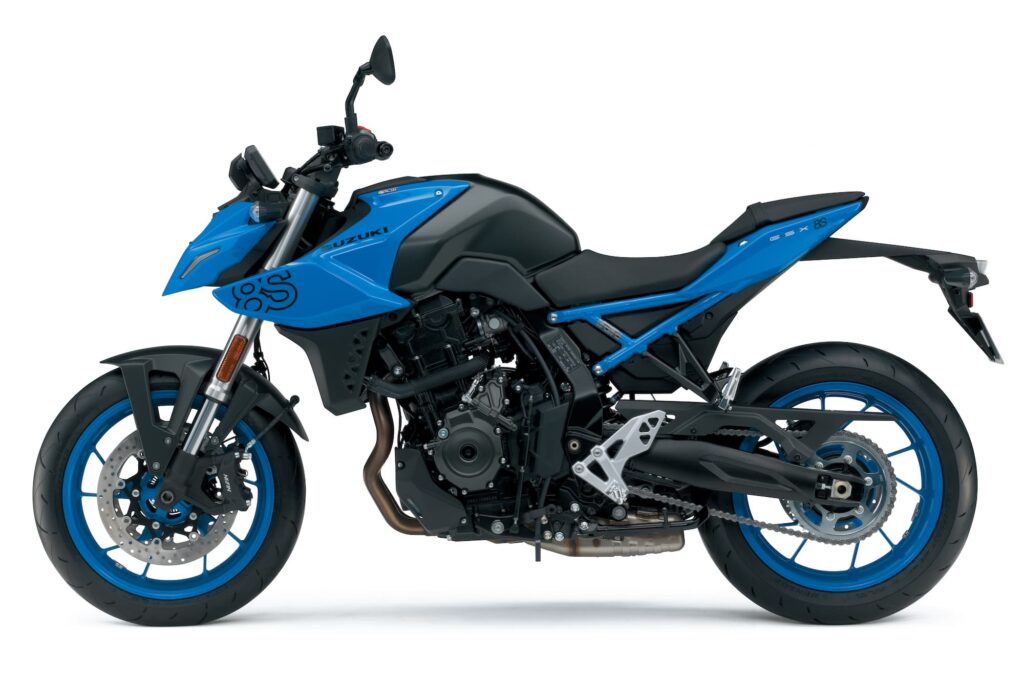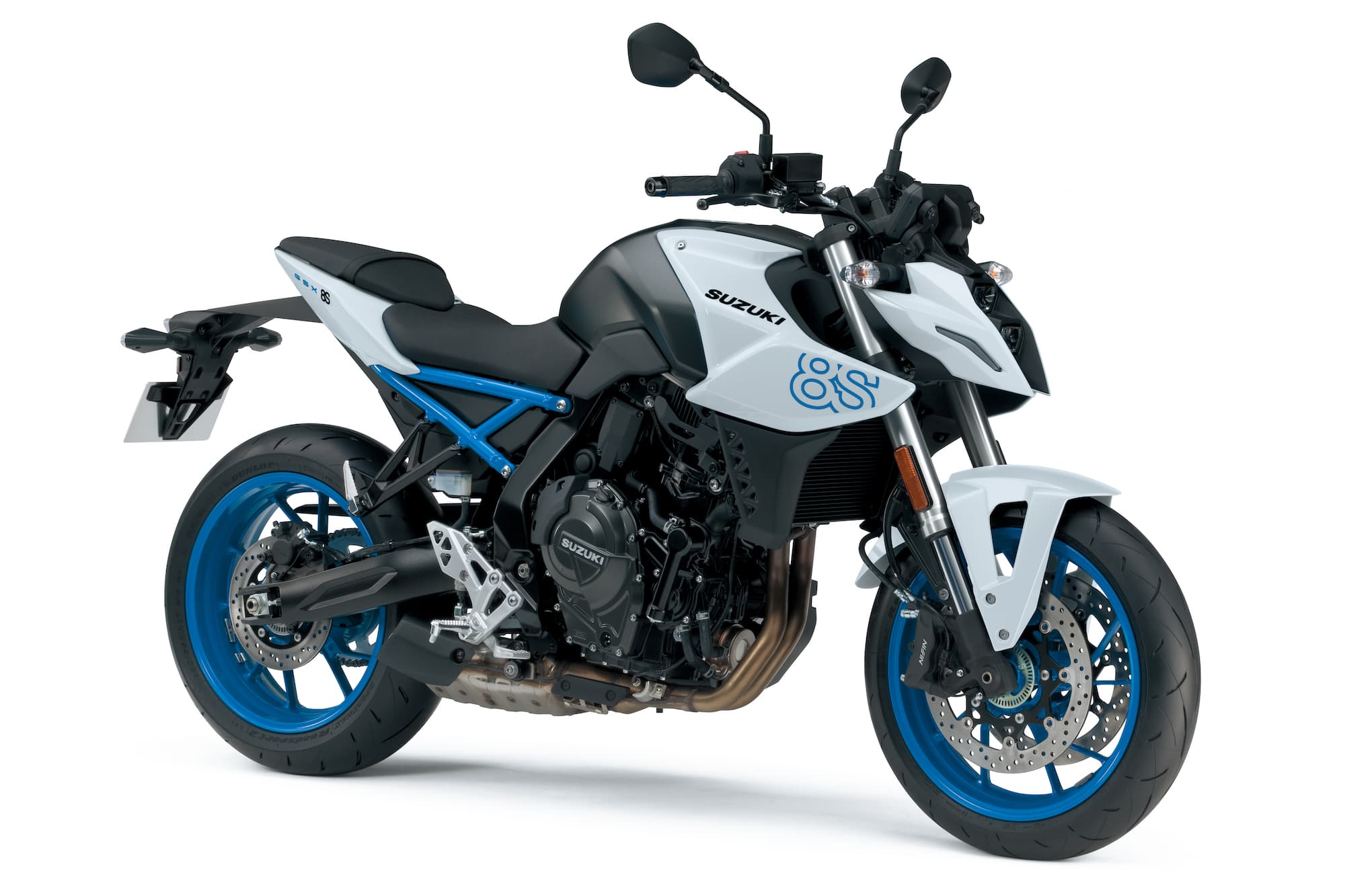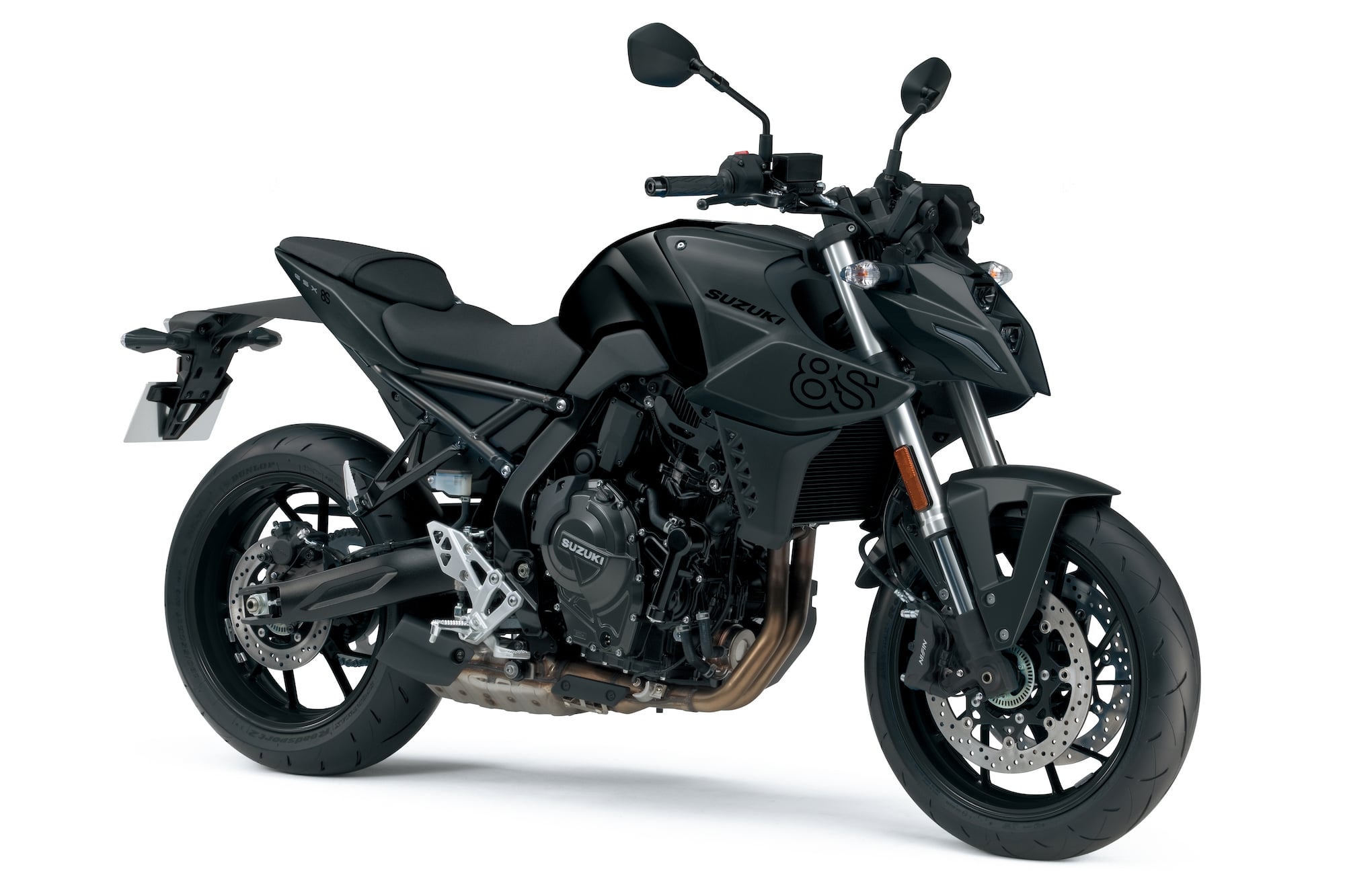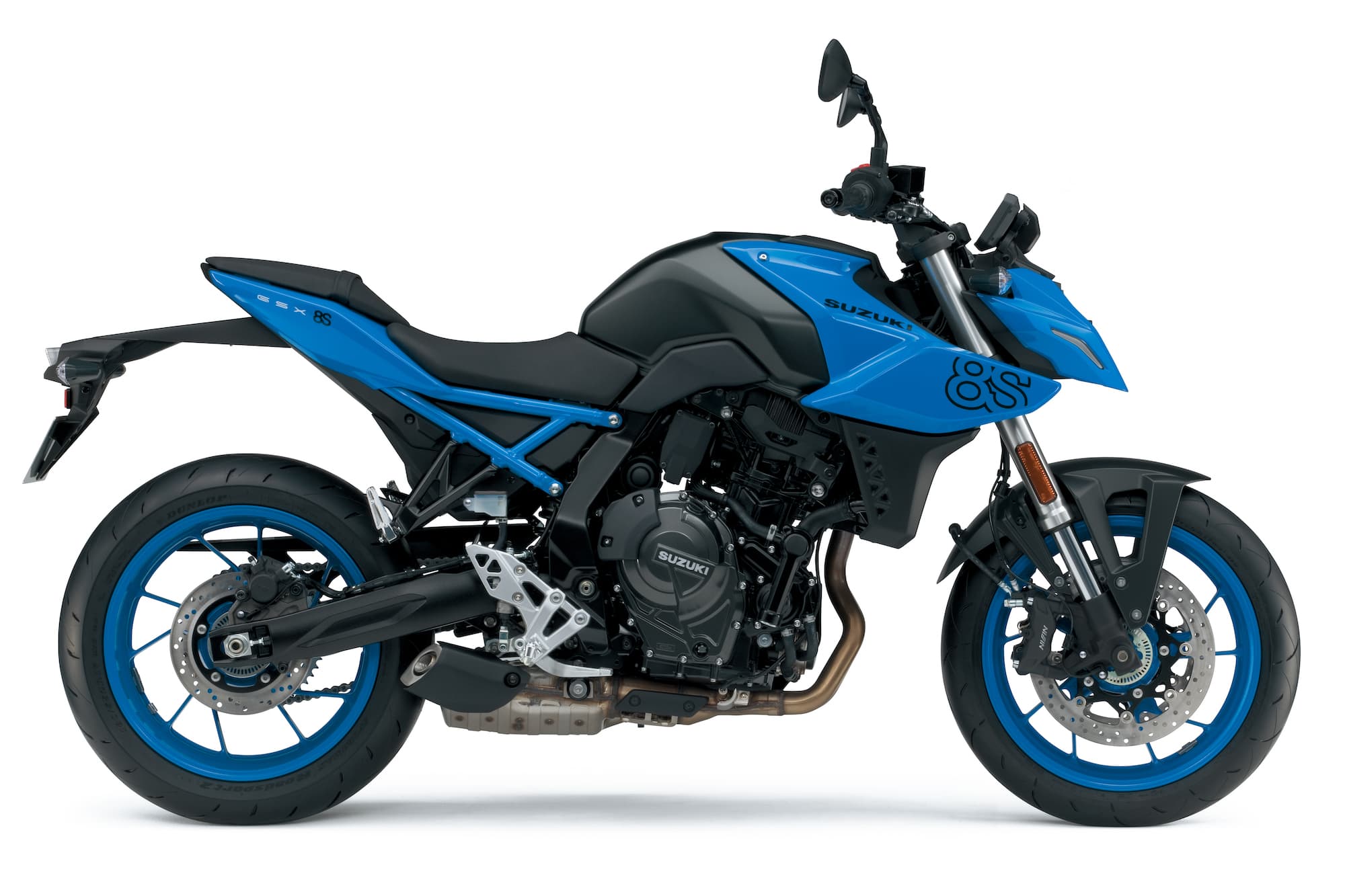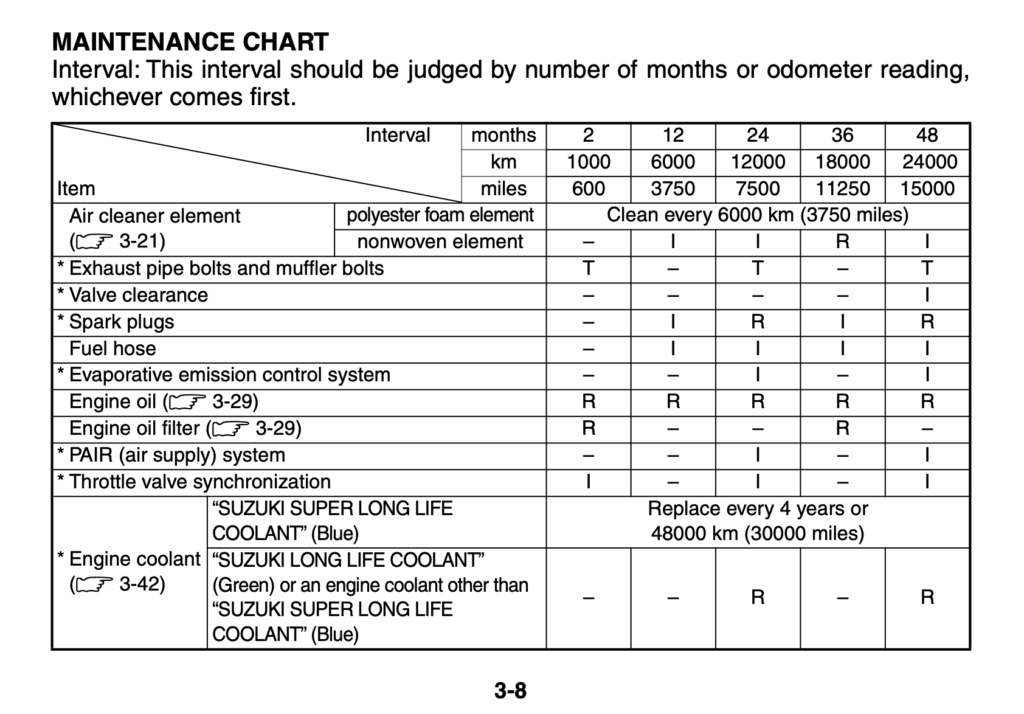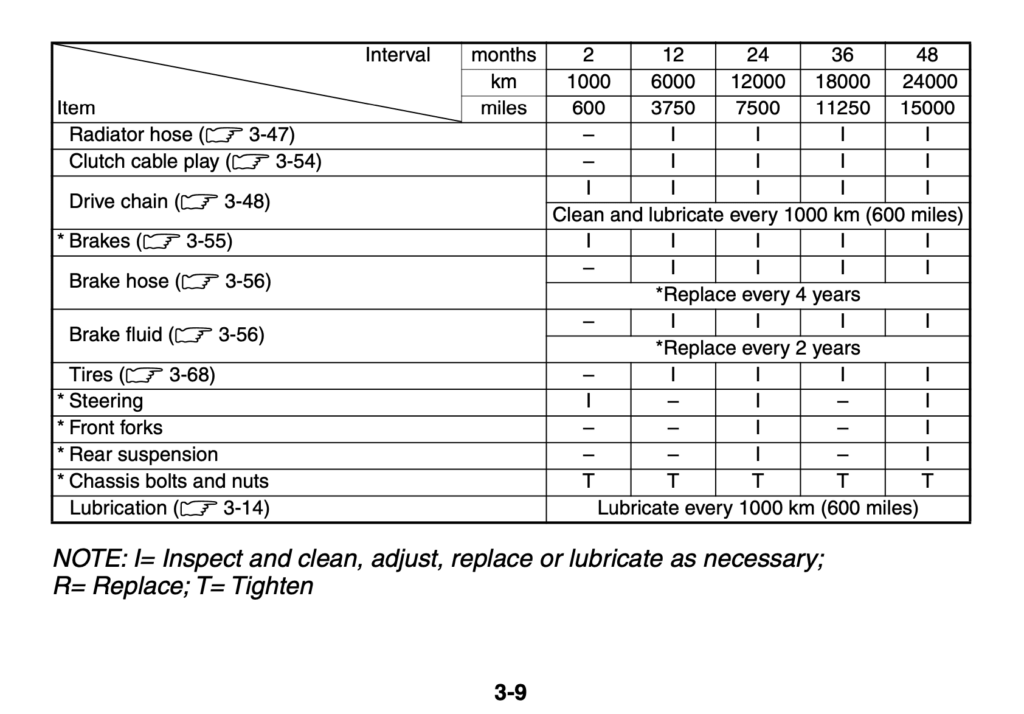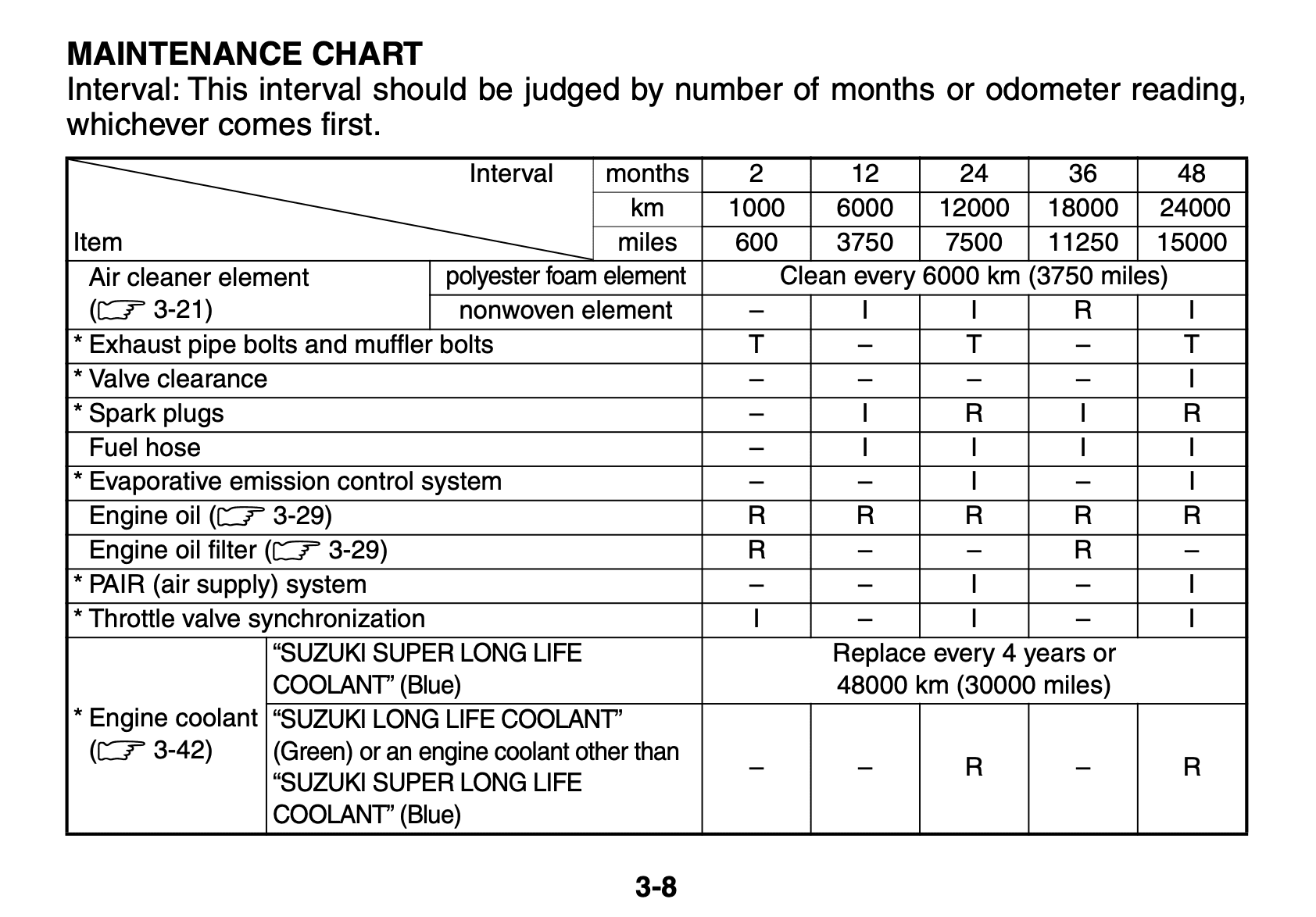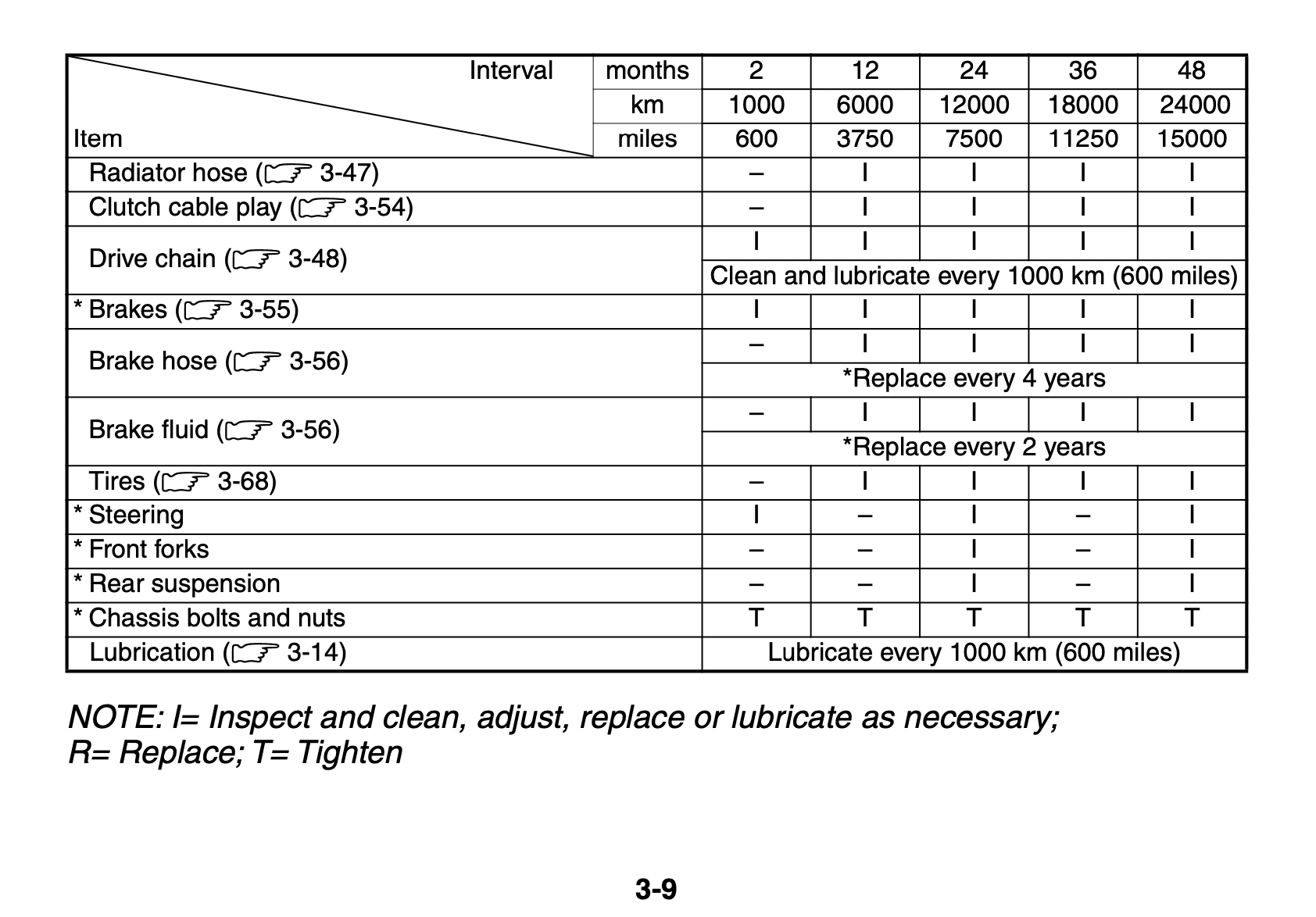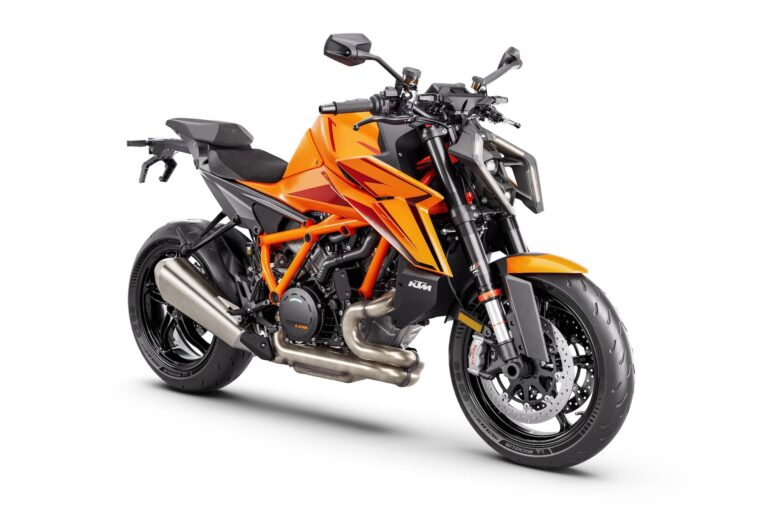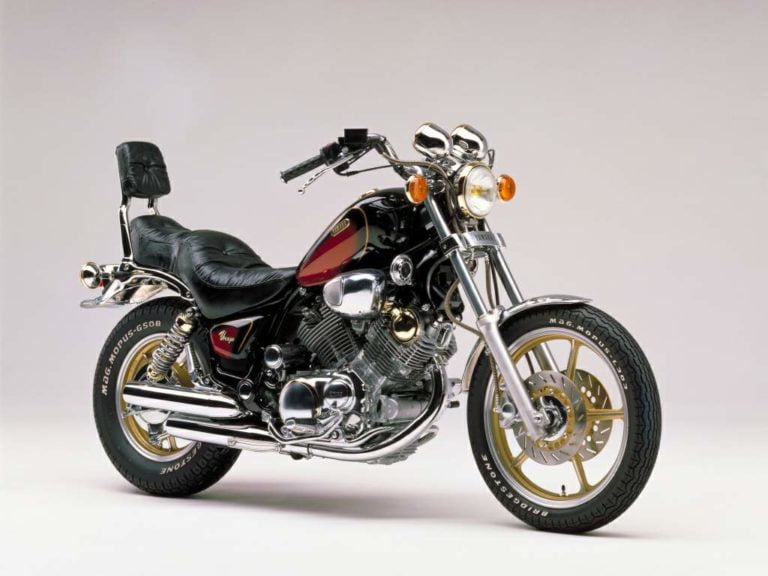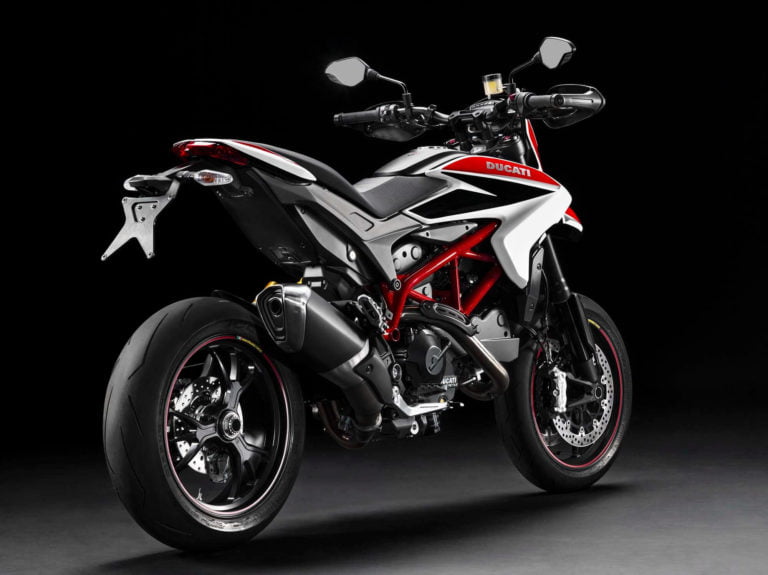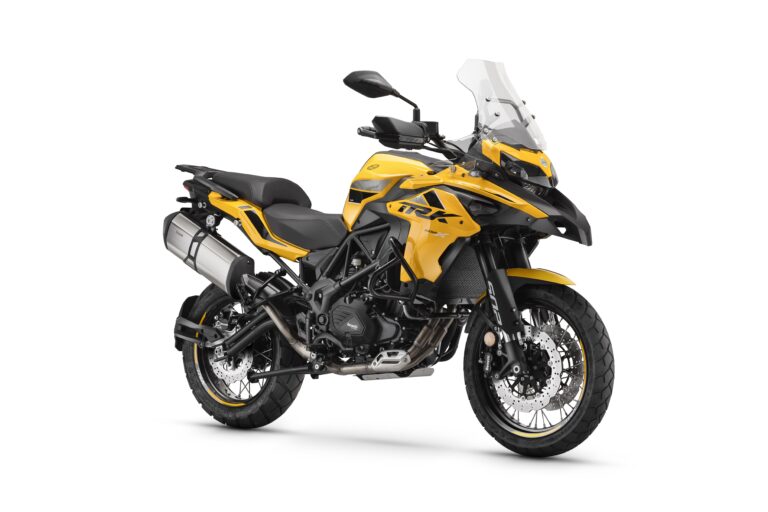Suzuki GSX-8S Maintenance Schedule and Service Intervals
This is the maintenance schedule for the Suzuki GSX-8S, sourced from the owner’s manual and cross-referenced with other parts sources from the web. You can see screenshots from the owner’s manual at the end of this document for reference.
The Suzuki GSX-8S is a new model for Suzuki, co-existing with the Suzuki GSX-S750 four-cylinder sportbike. Unlike most mid to large-size GSX motorcycles (which have inline fours), the GSX-8S is powered by a liquid-cooled 776cc DOHC parallel twin motor with four valves per cylinder. It makes 62 kW / 84 hp at 8500 rpm under EURO 5 trim.
The Suzuki GSX-8S is co-released with the Suzuki V-Strom 800DE, which has the same engine at its core, but in a middleweight adventure bike package.
This site has links from which we earn a commission (which unfortunately nobody can save, not even us). If you appreciate this research work, then please use those links. Thanks.
Suzuki GSX-8S Service Intervals
Overall, the Suzuki GSX-8S has 3750 mile / 6000 km or annual service intervals, like many other liquid-cooled Suzuki motorcycles. At every service, change the oil, and inspect or replace the spark plugs, inspect / replace the air filter, and do a host of other checks (listed below).
The major valve service interval for the GSX-8S is every 15000 miles / 24000 km.
To find the next service on a GSX-8S or 8R, you can hold the mode button down for 2 seconds, which will take you to a menu. Find the service section, in which you’ll see recent error codes and the next service due date.
The GSX-8S has a cable clutch, so keep the cable lubed and check that it’s in good condition, and periodically change the brake fluid.
And of course make sure you change the coolant periodically too — more often if you use anything other than Suzuki super long-life coolant (blue).
Suzuki GSX-8S Maintenance Schedule
Below is the maintenance schedule for the GSX-8S.
| mi x 1000 | 0.6 | 3.75 | 7.5 | 11.25 | 15 | |
|---|---|---|---|---|---|---|
| km x 1000 | 1 | 6 | 12 | 18 | 24 | Every |
| Standard annual inspection checklist (see below) – Perform | ✓ | ✓ | ✓ | ✓ | ✓ | Year |
| Engine oil – Change (Motul 7100 10W-40) | ✓ | ✓ | ✓ | ✓ | ✓ | Year |
| Engine oil filter – Change (HF138RC) | ✓ | ✓ | ||||
| Air filter (polyester foam type) – Clean (GSX-8S) | ✓ | ✓ | ✓ | ✓ | ||
| Air filter (non-woven type) – Inspect | ✓ | ✓ | ✓ | |||
| Air filter (non-woven type) – Replace | ✓ | |||||
| Spark plugs – Inspect | ✓ | ✓ | ||||
| Spark plugs – Change (LMAR8BI-9) | ✓ | ✓ | ||||
| Steering – Check for smooth operation, adjust as necessary | ✓ | ✓ | ||||
| Front fork – Check for smooth operation, no leaks | ✓ | ✓ | ||||
| Rear suspension – Check for smooth operation, no leaks | ✓ | ✓ | ||||
| Coolant (Suzuki super long-life coolant) | ✓ | 4 years | ||||
| Brake fluid – Replace (Castrol DOT 4) | 2 years | |||||
| Brake hoses – Replace | 4 years | |||||
| Throttle valve sync – Inspect / Adjust | ✓ | ✓ | ✓ | |||
| PAIR (air supply system) – Inspect | ✓ | ✓ | ||||
| Evaporative emission control system – Inspect | ✓ | ✓ |
Suzuki GSX-8S Annual Inspection Checklist
Below is the annual inspection checklist for the GSX-8S.
| Suzuki GSX-8S Annual Inspection Checklist |
|---|
| Fuel hoses – Inspect condition and routing |
| Radiator hoses – Inspect condition and routing |
| Clutch – Check function, adjust play. Lubricate cable as necessary |
| Brake fluid – Inspect level |
| Brake hoses – Inspect condition |
| Drive chain – Inspect |
| Drive chain – Clean / lubricate Perform every 1000 km / 600 mi — See below notes on checking slack |
| Lights and electrical equipment – Check function |
| Tires – Inspect condition and pressure |
| Chassis bolts and nuts – Inspect / Tighten |
| General lubrication – Perform Perform every 1000 km / 600 mi |
Maintaining your Chain on your Suzuki GSX-8S
Maintain your GSX-8S’s chain regularly. Whether you use your bike as a commuter (especially through rain or dusty conditions), weekend scratcher, or occasional track bike, the chain gets a lot of abuse and needs to be regularly cleaned, chained, and re-tensioned.
To clean it, use a good-quality (and affordable) chain lube like Motul Chain Paste, or use a full Motul Chain Care Kit to clean and restore a chain.
Suzuki recommends that you maintain your chain according to the following schedule.
| Chain maintenance item | Every |
|---|---|
| Check chain * Correct tension / slack (20-30mm / 0.8-1.2 in at loosest point) * Adequate lubrication * No excessive wear / damage | Ride (pre-ride check) |
| Clean and lubricate chain | 1000 km / 600 miles |
Damage includes loose pins, damaged rollers, dry or rusted links, kinked or binding links, excessive wear, and improper adjustment.
Measuring and adjusting Chain Slack
For Suzuki, chain slack is defined as the free play of the chain (the bottom segment) at its loosest point.
To measure chain slack:
- Put your bike in neutral and on its kickstand on a level surface with no load on it (no luggage / heavy accessories)
- Use a steel ruler and optionally gloves or a rag to move the chain up and down at the middle part of the bottom chain segment. Measure the deflection.
- Check chain slack at multiple points, moving the bike forwards or backwards.
Target chain slack for the Suzuki GSX-8S: 20-30mm (0.8-1.2 inches)
If the chain slack is out of spec, you need to adjust it.
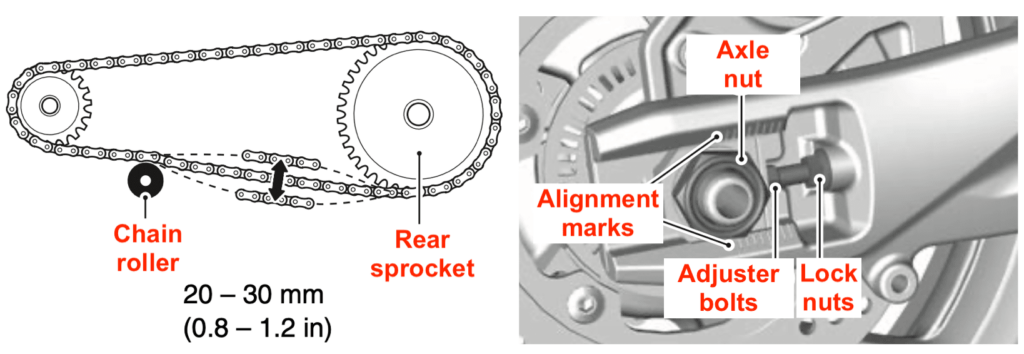
Adjusting chain slack
This is the procedure to adjust chain slack on the GSX-8S.
- Loosen the axle nut.
- Loosen the lock nuts on the left and right.
- Turn the adjuster bolts until you reach the target slack level.
- Make sure you keep the chain aligned, using the reference marks on both sides of the axle.
- Tighten the axle nut (torque: 74 lb-ft or 100 Nm)
- Re-check the slack to make sure it’s still right.
- Tighten the adjuster lock nuts (22 Nm / 16.5 lb-ft)
Wheels and Tires for the GSX-8S
The Suzuki GSX-8S ships with Dunlop Roadsport X tubeless tires to suit its 17-inch cast rims. It wears modern standard sportbike dimension tires, so there’s a wide variety of aftermarket options.
Below are the tire sizes and recommended pressures.
| Wheel | Tire size | Tire pressure (cold) |
|---|---|---|
| Front | 120/70ZR17 M/C 58W | 250 kPa / 2.5 bar / 36 psi |
| Rear | 180/55ZR17 M/C 73W | 250 kPa / 2.5 bar / 36 psi |
About the Suzuki GSX-8S
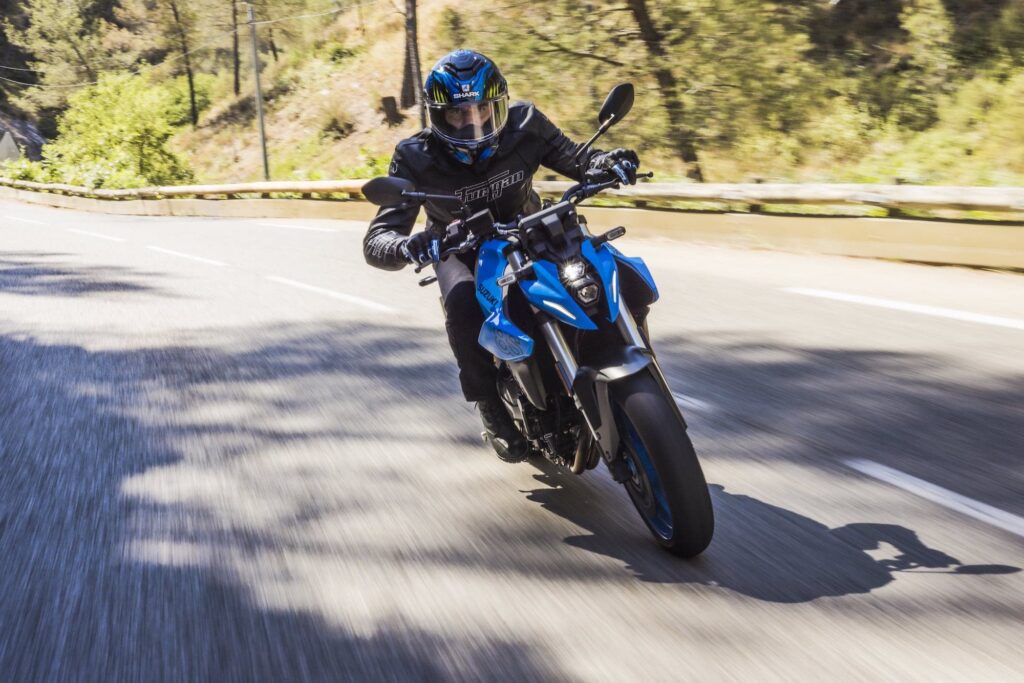
The Suzuki GSX-8S is a naked sportbike that draws on heritage from a couple of lines — but primarily from the Suzuki GSX-S line, the most recent iteration of which we saw in the GSX-S750.
The GSX-8S, like other GSX-S bikes, is designed to be an everyday motorcycle with a comfortable riding position and power adequate for a variety of uses, without being too extreme.
Unlike the GSX-S750, or before that the GSR750, the Suzuki GSX-8S is powered by a parallel twin engine. It’s an all-new engine for Suzuki. They haven’t done parallel twins in recent years, preferring V-twins or inline fours. Other GSX-S bikes have had engines derived from former high-power sport bikes (the GSX-S750 has an engine reminiscent of a mid-2000s GSX-R750). Not the GSX-8S!
The engine in the GSX-8S is a gem, though. It’s a 776cc liquid-cooled DOHC 8-valve engine with a 270-degree crankshaft, which is all the rage these days.
In base trim, the motor makes an excellent amount of power for a middleweight, with 61 kW (83 hp) at 8500 rpm, and a peak of power of 78 Nm (57 lb-ft) at 6800 rpm. Like many middleweight twins, this one is designed to be short shifted — according to Suzuki’s supplied dyno graph, torque seems to plateau beyond around 6000 rpm, which is where a natural shift point may be for many.
This is a really nice middleweight amount of power, perfectly suited for a naked bike weighing around 200 kg (202 kg / 445 lb, to be precise). The torque and weight of the GSX-8S puts it in perfect competition with the also newly-released Honda CB750 Hornet, which has a near-identical engine platform.
There are a few other things that let the Suzuki GSX-8S take over as the middleweight of choice in Suzuki’s line-up.
Firstly, Suzuki has given the middleweight sport bike a bevy of rider aids. While it doesn’t get cornering ABS or cruise control, it does get the standard suite many sport bikes have been getting lately of ride modes (via Suzuki’s SDMS), traction control, a bi-directional quick shifter, and of course ABS. The GSX-8S also has a clutch assist system, which its predecessors lacked.
Naturally, letting you control all those ride aids is a 5-inch TFT.
The Suzuki GSX-8S’s mode switch is on the left handlebar. This gives you access to the SDMS (drive mode) and TC settings. (ABS can’t be adjusted.)
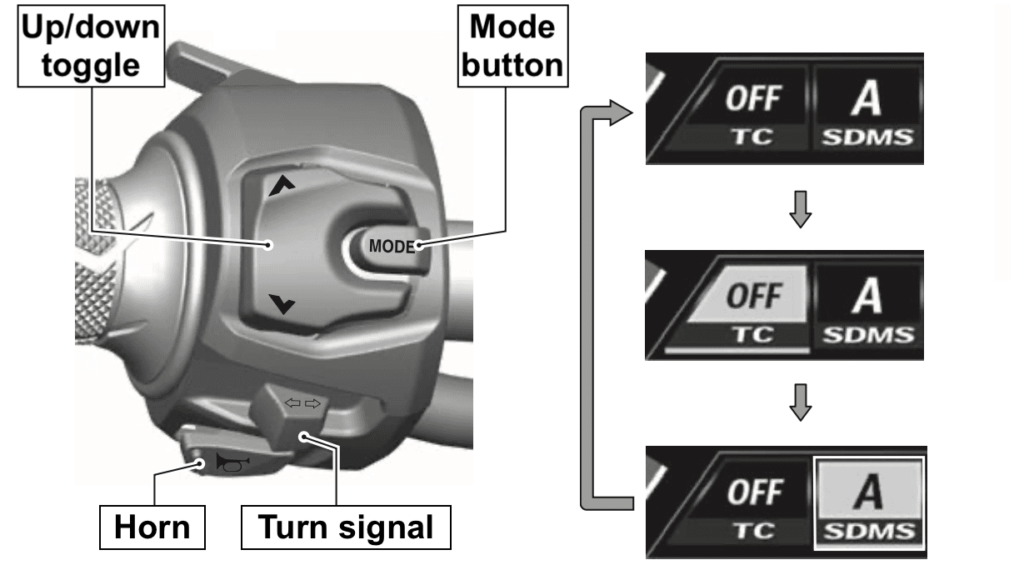
Use the mode button to switch between TC and SDMS, and use the up and down buttons to choose a setting.
Secondly, the Suzuki has decently high-spec riding gear. It has a KYB inverted fork up front, and a KYB shock at the rear. Unfortunately, they’re largely non-adjustable, other than for preload at the rear. Braking is via twin 310mm discs and radially-mounted four-piston calipers — stuff that was superbike spec just a decade prior.
Thirdly, Suzuki has brought the GSX’s design into the 21st century, giving it “streetfighter” styling and stacked vertical headlights. They’re not for everyone, but they’re very eye-catching.
Like many liquid-cooled Suzuki motorcycles, the Suzuki GSX-8S has 3750 mile or 6000 km oil change intervals, at which point Suzuki suggests you check over a number of things.
Luckily, the parallel twin design means that the valve clearance check (every 15000 miles / 24000 km) is a relatively simple affair, as there’s only one cylinder head to crack and no difficult access issues for rear cylinders.
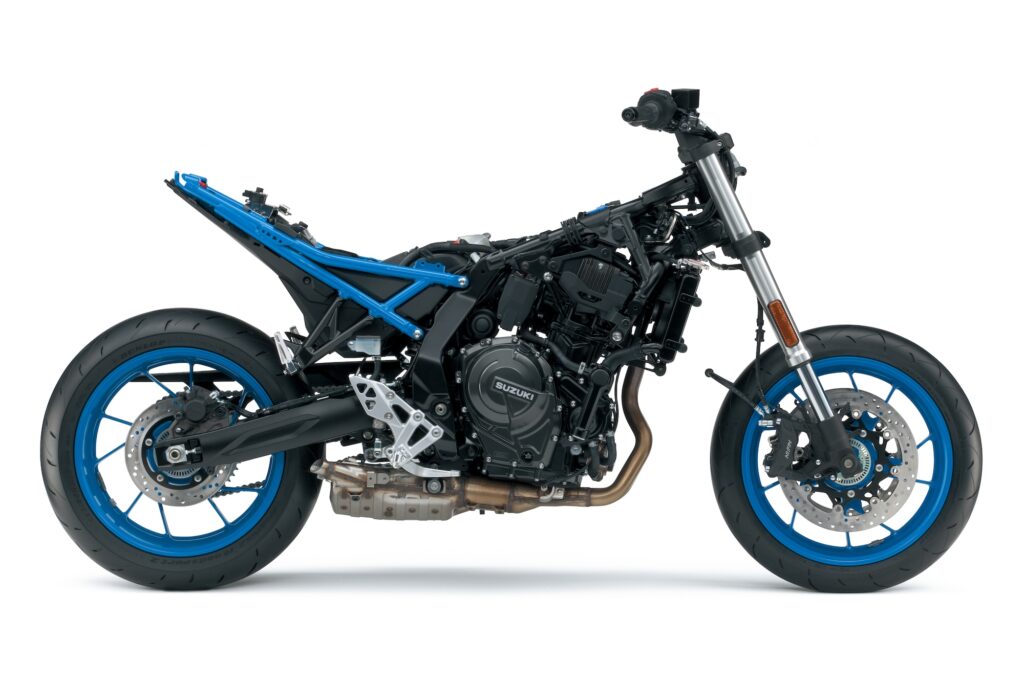
The only downside of the GSX-8S is that by the looks of it, the venerable Suzuki SV650‘s days may be numbered.
From 2024, Suzuki also released the GSX-8R in a fully faired package with much the same core as the GSX-8S.
Reference — Screenshots from the Manual for the Suzuki GSX-8S
Below are some reference screenshots from the Suzuki GSX-8S’s owner’s manual.
You can download the full manual for the Suzuki GSX-8S directly from Suzuki’s website here.
